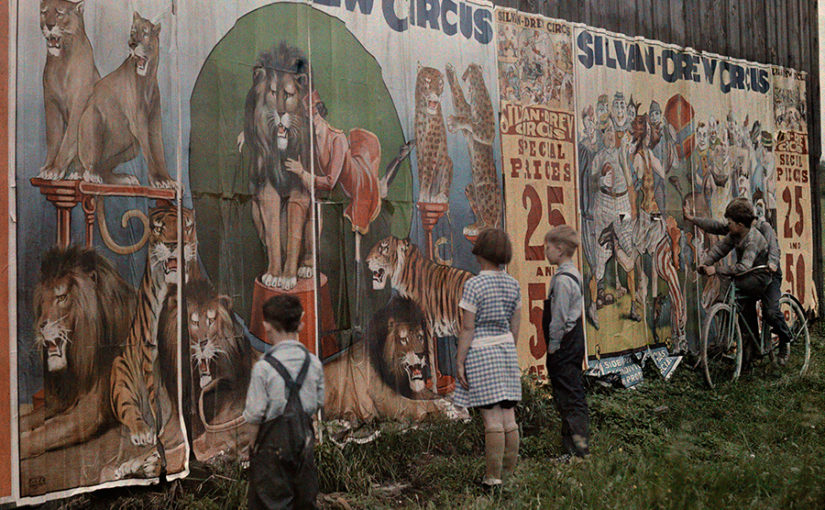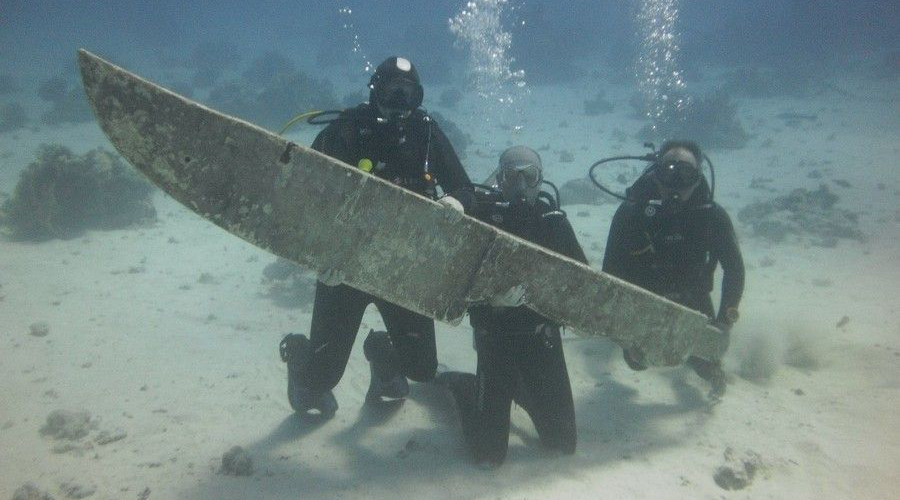This little post was inspired by a little article titled “Doctor’s Orders; Let children just play” posted in the hot dog-days of summer, August 2018.
The article reinforces a notion that I have that “play is the work of children”. It is how they learn to become an adult. It doesn’t matter if you are a dog, a cat, an elephant, or a monkey, all animals learn from playing.
However, it is more than that, play is individualized free-roaming periods of children playing without supervision. They need to learn to be autonomous. They need to be able to use trial and error. They need to explore the idea of actions have consequences. When a child does not have this environment, they are often retarded in some fundamental areas.
The boy is a natural spectator; he watches parades, fires, fights, football games, automobiles and planes with equal fervor. However, he will not watch a clock. A boy is a piece of skin stretched over an appetite. However, he eats only when he’s awake. Boys imitate their Dads in spite of all the efforts to teach them good manners. Boy’s are very durable. A boy, if not washed too often and if not kept in a cool quiet place after each accident , will survive broken bones, hornet’s nests, swimming holes and five helpings of pie. Boys love to trade things. They’ll trade fishhooks, marbles, broken knives and snakes for anything that is priceless or worthless. -Herbert Hoover
Introduction
In the United States today, I see a matriarchal tide that has emasculated men, and have pampered children to a point where they grow up spoiled without discipline. It does not matter if the child is a boy, or a girl, or considers themselves something in between. That is something that is not desirable for the children, families, and society as whole. Children are young and they need to learn basic rules to fit into society. After all, a puppy that is not litter trained, will deposit feces all over the house. A horse that is not “broken” will never let you ride it.
Parental Duty
A parent has a duty to teach their children and not outsource that responsibility to others. Whether it is a babysitter, a community government, or a church, a parent must provide adaptive skills and rules of behavior to their children. Otherwise, the child will become a “misfit”. They will not be able to fit into society.
Yet, a worrisome as this can be, too much supervision is just as dangerous. Too much protection is equally bad. When parents are overly protective of their children, they essentially outsource all of their offspring’s risk management to themselves. Part of growing is learning to judge risk behaviors.
Is that river to wide to swim across? Is the ice too thin to walk on? Is that tree too high to climb? Can I jump off the third story into a kiddy pool of water below?
Children need to be able to make these decisions on their own without reliance on others. Otherwise, the operating assumption is that mom and dad will always be around to keep them from harm. They will grow up expecting others to make those fundamental decisions for them. They will believe that society and the government, can best decide and tell them how to live.
Children need to be Self Reliant
Rather than making kids dependent on you to keep them safe, prepare them to face and manage risks themselves. This doesn’t mean totally shoving them into things without a safety net. Like how my old school mates learned how to swim – their father simply threw them into the pool. No. I don’t believe in that. Rather, they need a set a staged instructions.
In fact, this system was promoted by Gever Tulley.
Gever Tulley is an American writer, speaker, educator, entrepreneur, and computer scientist. He is the founder of the Brightworks School, Tinkering School, the non-profit Institute for Applied Tinkering, and educational kit maker Tinkering Labs. His more recent work centers around the concept of students learning through building projects. He has delivered multiple TED talks on his work, published the book 50 Dangerous Things (You Should Let Your Children Do), and has contributed articles for many online media outlets.
Gever refers to this system as a “scaffolding” of “planning, practicing by steps, and taking reasonable precautions.” Obviously, the robustness of this scaffolding should be adjusted to your children’s age and level of maturity. You certainly do not want a toddler who can barely stand up trying to cross a city street. As they grow, you (as the parent) can then progressively withdraw the support “scaffolding”. In this way, they can gain confidence and competence and become able to fend for themselves.
The great Mr. Rogers stated that “play was the work of children”. He was so correct about that. That is how youth learns. It is through play. Little girls learn how to raise babies through play. They play with dolls, they feed the dolls, they play “house”, and they hold “tea parties”. Little boys learn how to work together in group sports. They learn how to build cabins, tree houses, and “forts”. They tear things apart and put things together. Some girls like to do “boy activities”. Some boys like to do “girl activities”. That’s all both ok too.
The point is that play is how children learn.
The term “free play” is permitting children to learn under minimum supervision. Not only is there no supervision, but that the child knows that they are “on their own”. They know and realize that they can do what they feel like doing, but that if something goes wrong, they will be on their own. It is an adventure in risk…
“Free play has little in common with the “play” we give children today. In organized activities, adults run the show. It’s only when the grown-ups aren’t around that the kids get to take over. Play is training for adulthood.” -The Fragile Generation
You have to teach the children to be independent.
That is not going to happen with you sitting off to the side or within earshot. You need to teach them how to judge risks, and then the decision process on how to take them. I personally believe that the best way to do this is to take these little steps with them together, first. Then, over time, gradually let them take the risks without you being nearby.
Staged Risks
The keys to engaging in this process in a way that will not only benefit your children, but allay your own anxiety. After all, if you don’t teach your children well, you will get sick over the huge anxiety that you will need to endure. The solution is to introduce risk in graduated phases.
It’s a basic and simple process. The first step in allowing your kids to engage in a “risky” activity is to identify what exactly the risks are. For instance if you fall off of the first step in a ladder, the fall isn’t so bad. If you fall off the fourth step it is worse. They will not want to fall off anything higher. They will not WANT to. They have learned that risks have consequences.
That’s not going to happen, if you don’t allow your child to get on the ladder. It’s not going to happen when you are there to catch them. They need to experience the consequences. It needs to be visceral.
Once you’ve identified the risks of an activity, you can figure out how to mitigate them. It should be natural for most children. You fall down from skating on the ice; you will feel bruised and maybe have some torn skin. Let it happen!
My children do not wear arm and knee pads when they go ice skating (though, neither do the other Chinese children either). Let them fall down. Let them learn what happens and the consequences of it.
Falling down is an important part of growing up. Do not coddle and deprive. They must experience the benefits and risks together.
History
Know your history.
Up through the early 20th century, children, even very young ones, worked. They got up early in the morning and did their chores. They washed up and trudged off to work. Often they worked 12 hours a day in the mines and the factories. They hawked newspapers on grimy street corners, or like my father, shined shoes in front of businesses downtown.
The reader should not misunderstand. There’s nothing really romantic about such child labor. They were not learning. They were not engaged in play. They were doing what they needed to do to survive. They did what they had to do. It was dangerous.
It was dangerous, and yet they survived.
Imagine that!
Consider the youth of the past. When he was seventeen, Jack London (remember him? He wrote the book “The Call of the Wild”.) Signed on to sail with a gaff-rigged schooner bound for seal hunting in the icy Bering Sea. I dare say that if a child did that today, the parents would be locked up in jail. Imagine that! Not even old enough to shave. He walks down to a port, talks to the ship’s mate and gets a job bound for icy North! What balls! Yet those types of things are what build character and makes a parent proud.

This was not someone who grew up around boats. This was not someone who’s father was a fisherman, and who’s classmates all knew how to sail. No. Not in the least. This young man knew absolutely nothing. He knew positively zero. Yet, he knew what he wanted to do. So one day, he packed his bags and left and did it.
It sure beats getting a trophy for coming in 10th place in a sack race.
When he was thirteen, Andrew Jackson (Remember him? He was a President, don’t you know?) served as a courier for American militias fighting in the Revolutionary War. He was thirteen years old. Yet here he was going back and forth between battles and regional headquarters. He carried messages, and if he was ever caught, he would have been tortured and killed. Yet, he did so. At the tender age of thirteen.
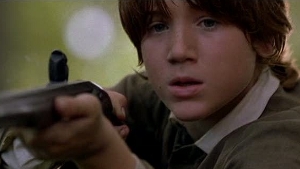
Do you allow your thirteen year old to ride a bicycle unsupervised?
When he was twelve, Louis Zamperini left home to spend the summer living on an Indian reservation and running around in the mountains. He lived in a wood cabin with a friend the same age and killed his own dinner each night with a rifle.
Louis Silvie "Louie" Zamperini (January 26, 1917 – July 2, 2014) was a US prisoner of war survivor in World War II, a Christian evangelist and an Olympic distance runner. Zamperini took up running in high school and qualified for the US in the 5000m race for the 1936 Berlin Olympics. He finished 8th in the event. In 1941 he was commissioned into the United States Army Air Forces as a Lieutenant. He served as a bombardier in B-24 Liberators in the Pacific. On a search and rescue mission, mechanical difficulties forced Zamperini's plane to crash in the ocean.
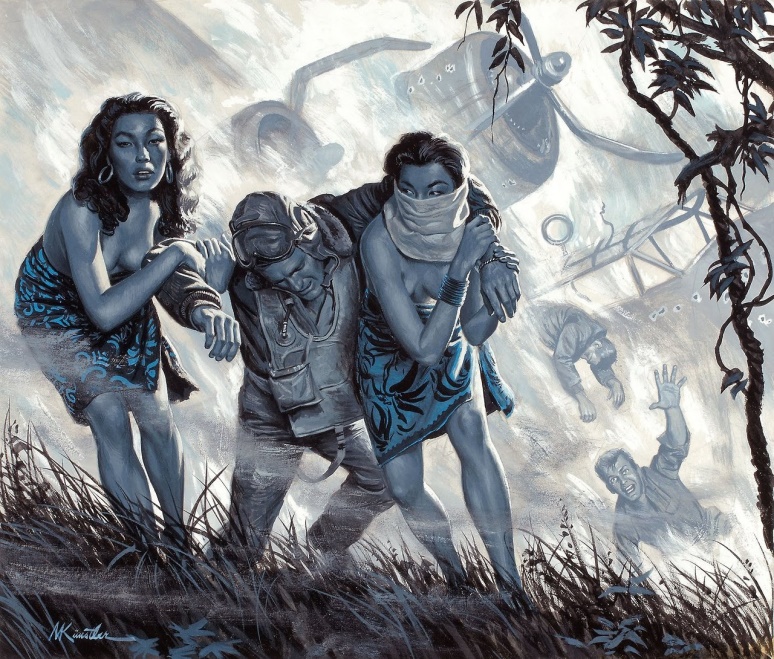
After drifting at sea for 46–47 days (island spotted on the 46th, and arrived on 47th) he landed on the Japanese occupied Marshall Islands and was captured. He was taken to a prison camp in Japan where he was tortured. Following the war he initially struggled to overcome his ordeal. Later he became a Christian Evangelist with a strong belief in forgiveness. Zamperini is the subject of two biographical films, the 2014 Unbroken and the 2015 Captured by Grace.
Can your twelve year old child do the same? Do you dare let them live alone in a cabin in the woods? Do you dare let them have and use a gun? Do they know how to survive in the wilds?
If these kids can sail the oceans, serve on the war-front, and live by themselves, then our kids can ride their bikes to school. Maybe, you the reader, disagree with me. Maybe you think that it is just fine to raise your children as “pussies”. After all, I have heard the arguments; it is the new progressive reality. The society has changed, and I am but an old dinosaur. Never the less…
Unfortunately, the landscapes of play and exercise for children have been both literally and metaphorically flattened, if they exist at all in the United States. As many as 40% of schools have either eliminated one or all of their recess periods, not simply to gain more classroom and testing time, but also because of liability concerns. For the same reason, climbing ropes and dodge ball games have been removed from gym class. Can the reader believe this? It’s true! The risk of someone getting hurt is too high; the risk of physical ineptitude doesn’t rate, even though it’s correlated with the risk of obesity.
To prevent my children from turning into emasculated serfs being harvested by the American elite, let me present some things that I permit my children to do…
Take a Train
I really don’t know why I personally think this is a big deal. Yet, it is. Every single child that I know, get really excited when they are told that they are going to take the train. There is something far different and exciting about a train. Yes, I am aware about the excitement in taking an airplane ride for the first time. Yet, a train is something more than that. A train ride is special.
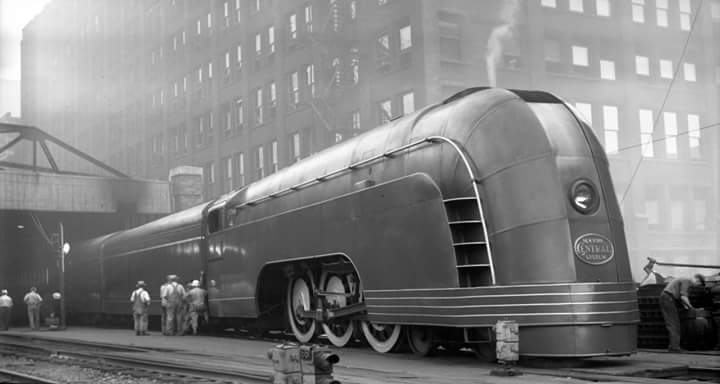
From the point of view of a child, a train gives you the full (end) experience of travel. They can see what it is like. You buy a ticket, you ride in a seat, and you arrive in your destination. It is easy to understand. It is easy to conceptualize.
That isn’t so clear to a child when they fly. To a child, they have to wait in huge lines, often hours long, to pass through TSA. They have to sit on board, which at least in America is becoming more akin to herding cattle than it is to taking a trip.
Keep an eye on perspective. My father took a train to attend my nieces wedding in New York City. It had been nearly thirty years since he taken a train. His opinion? It was marvelous. They had wide and spacious seats. Plenty of legroom. They could read, play cards, and just nap. He loved it. His wife, enjoyed knitting and listening to the radio. It’s a different way of traveling.
If you, my dear reader, do not understand what I am discussing here then you obviously haven’t rode in a train lately.
Make a Fire
In China you can do just about anything, but finding a place in the woods to build a campfire is not all that easy. However, it can be done. Why is this important? Because building a making a fire is a fundamental requirement of all children since the age of written history.
Young girls learned how to keep the hearths burning. Not only to keep the household warm, but also to make sure that the food was prepared.
Young boys learned how to survive outside, far away from their home, and that included providing warmth and nourishment through cooking game that they caught.
In America, these are no longer considered important. As there just isn’t any such thing as gender. Alternatively, societal roles, or the need to live “off the grid” and away from society. The all-knowing American police state will take care of you, don’t you know…
I strongly disagree with the progressive direction of the Obama Presidential mandates. While every other child is being groomed for slavery (or at least serfdom), my children will have the necessary skills to survive away from the American Progressive madness.
For me, I let them play with matches and light candles when they’re really young. Indeed they are pre-school age. This can be done in your house. Buy a set of candles. It might set you back a whole $1. Then, let them practice lighting it. Do it until they are bored. Then try it again and again. Soon, they will tire of it, and not want to play with fire any more.
When you ask them, they will say “Awww, not again!”.
They’ll learn quite a bit. They will learn that fire indeed burns and it hurts. However, with a flame so small, it won’t hurt too much if it glances their skin. When they get to a little older, let them build a fire all by themselves (still with your supervision, of course). A campfire is the best, but if you are in an urban environment, teach them by making candle experiments.
Candle Experimentation
You take an old can; put corrugated cardboard inside so that the spaces (holes) in the can face up. Pack the cardboard in. I like to wrap them in a circular shape. Line the inner side (of the tin) and then add pieces until there just isn’t any room left. Then melt wax (very cheap) on a stove and pour it in the holes in the cardboard.
Let your child make this candle device. Then allow them to experiment with wax, with cardboard, with fire, with other discarded tins. The cost will be minimal, but if you allow them to do it in the safety of your supervision, it will be beneficial to them.
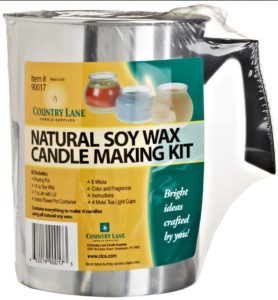
Teach them by showing them. Then allow them to make their own. For a campfire, gather the wood. Cut the branches. Build up tinder. Get it started burning. Children can learn this. Teach them at an early age.
Campfires
Campfires are great, and I just cannot imagine a childhood without one.
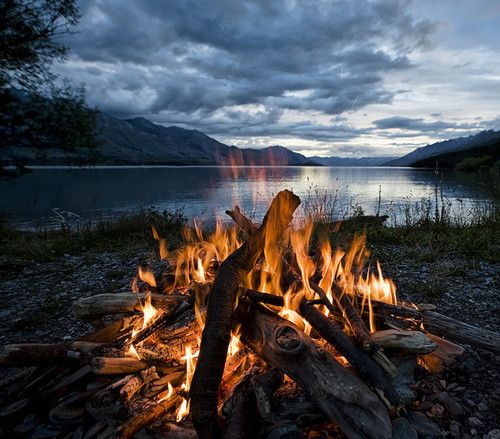
Teach your children about how to make a fire. You gather wood. You gather tinder. You clean out a fire pit, and you surround it with rocks. You select the rocks carefully, so no “river rocks” are used. Then you arrange the wood, and start it by tinder. They can participate and help. In no time, they will be starting the fire on their own.
Let them add sticks and wood to the fire. Let them learn how to make the fire hot, and see the benefits of the hot embers.
It need not only be about making the fire. It can include such activities as cooking cut-up potatoes in aluminum-foil in the embers. (Easy to make and delicious. Cut up a potato (after washing it), and an onion. Add salt and pepper and a pad of butter. Wrap the entire thing in aluminum foil and place it in the embers and let it cook a spell. It is delicious.)
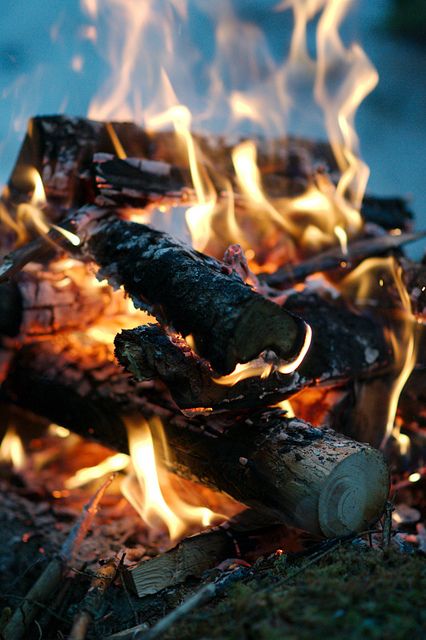
It can include roasting marshmallows on a stick, or hotdogs until they are black and crunchy (the best kind). My first roasted marshmallow occurred when I was six. It was before first grade. It can be earlier than that, but make sure that you supervise the youngster, as they do need training. Otherwise, they can burn their mouth, or fall into the fire. Yikes!
Fires are a great venue for bonding. It can include talking and telling stories, especially family lore, or hopes and dreams of the children. You can be a great parent or uncle in these events. Don’t let them pass away. Don’t let them fade into obscurity simply because there is a new app in your cellphone.
By the way. I strongly urge all campfires to be a cellphone free zone.
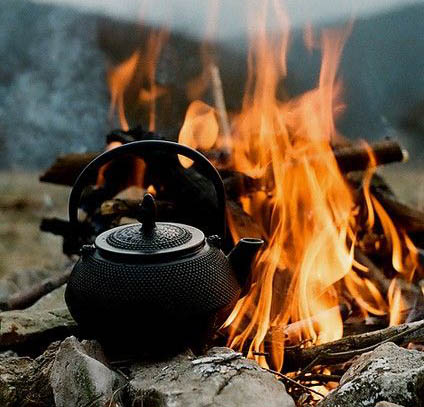
Let them participate in stories, or just allow them to stare into the burning embers and daydream. Let your child know the differences between wet wood, and dry wood. Let them understand the differences between a pine and a hard wood. Let them see the difference in making tinder, and how coal can make a fire much hotter. Let them learn what happens to a hotdog on a stick when you cook it deep down inside the hot embers of a fire, and what happens when you don’t. Let them learn through experience.
I personally find it absolutely laughable that many American parents are so fearful that they will not allow their children to play with fire. Certainly, no one wants the children to burn up a house or set a field on fire. Yet, the knowledge of what a fire is, and how it can be controlled is an important learning exercise for children.
“If a 10-year-old lit a fire at an American playground, someone would call the police and the kid would be taken for counseling. At “the Land”, spontaneous fires are a frequent occurrence. The park is staffed by professionally trained “playworkers,” who keep a close eye on the kids but don’t intervene all that much. Claire Griffiths, the manager of the Land, describes her job as “loitering with intent.” -The Land. The Land is an “adventure playground,” though it sounds a little too much like a amusement park. In the U.K., such playgrounds arose and became popular in the 1940s, as a result of the efforts of Lady Marjory Allen of Hurtwood, a landscape architect and children’s advocate. Allen was disappointed by what she described in a documentary as “asphalt square” playgrounds with “a few pieces of mechanical equipment.” She wanted to design playgrounds with loose parts that kids could move around and manipulate, to create their own makeshift structures. But more important, she wanted to encourage a “free and permissive atmosphere” with as little adult supervision as possible. The idea was that kids should face what to them seem like “really dangerous risks” and then conquer them alone. That, she said, is what builds self-confidence and courage. Although the play-workers almost never stop the kids from what they’re doing, before the playground had even opened they’d filled binders with “risk benefits assessments” for nearly every activity. (In the two years since it opened, no one has been injured outside of the occasional scraped knee.)
Here’s the list of benefits for fire:
“It can be a social experience to sit around with friends, make friends, to sing songs to dance around, to stare at, it can be a co-operative experience where everyone has jobs. It can be something to experiment with, to take risks, to test its properties, its heat, its power, to re-live our evolutionary past.” The risks? “Burns from fire or fire pit” and “children accidentally burning each other with flaming cardboard or wood.” In this case, the benefits win, because a playworker is always nearby, watching for impending accidents but otherwise letting the children figure out lessons about fire on their own.” -The Overprotected Kid
There is something primeval about fire, the smell of burning wood, and the weight of a metal lighter in your hand. (Disposable lighters are like paper cups of coffee; discardable and plain. To get the “full” experience, do it right.)
Teach them how to make a fire from tinder, and scraps.
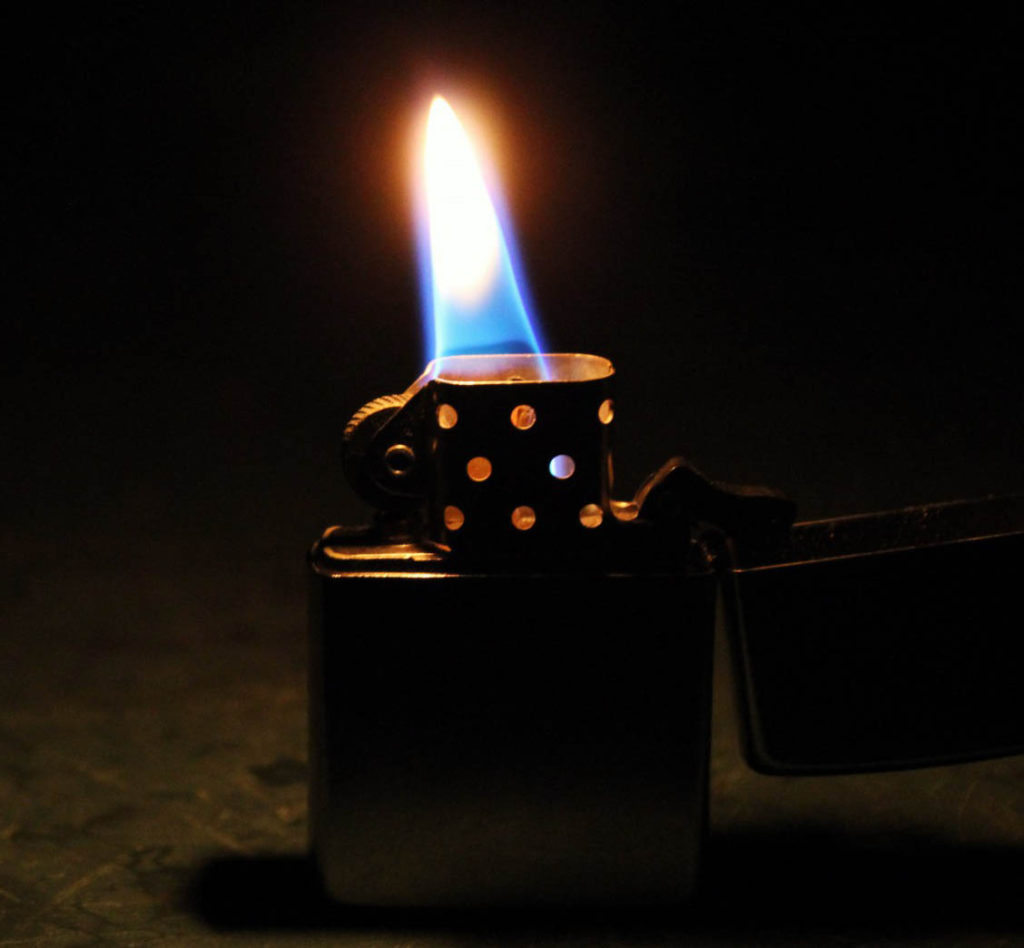
Show them how to make a fire pit, chop wood, and select the best wood. Let them know the difference between green-wood, soft-wood, and hard wood. Let them poke the fire and watch the sparks fly. Let them blow on the fire and watch the embers glow and grow.
Alternatives
One of the more memorable events in my life took place during my college years. I was out riding in the “boondocks” with a friend of mine (Sid Custer) in his pickup truck. We were having a great time, and we stopped in the middle of the dirt road for a smoke (not a cigarette) and pee. Neither of us had a lighter. So my friend siphoned some gas out of the tank, put it on a rag he scrounged out of the glove box, and used his pocketknife to create sparks, which quickly set the rag on fire. We lit up, and continued our merry way. Yes. Men, need to be able to adapt to survive. They need to know, that in a pinch, they can “make do” and adapt.
I never forgot that event.
Later on during other stages of my life, I saw interesting improvisations that enabled people the ability to light up cigarettes. Here are some additional ways to start a fire. I would suggest that the reader also make a point to their children that fire can be made easily and is not something to fear.
Teach them how to create fires on demand. Teach them how to control fires, and what to do, when a fire gets out of control.
- Gum Wrapper Fire. This is a very easy method, and commonly used in prison. You take a pack of chewing gum. You remove the silver foil. Then you get a battery (any working battery, but I’ve seen type AA or AAA used effectively), and put the foil so that it touches both ends. Now the fire might start at any point along the foil, so you need to tear away some of the foil to make a narrow gap. That will focus the fire to start there. Make sure you have some tinder ready, as the fire will be short lived. It might last two to three seconds, tops.
- Ramen Noodle Stove. Take a pack of Ramen noodles. (Remove it from the plastic wrapping.) Pour gasoline, kerosene or any other flammable liquid on the uncooked noodles. Put it on a brick, a rock or other safe surface. Then light carefully (making sure that no gasoline is on anyone’s hands or splashed on the ground nearby). It will act like a “fire starter log”. As such, it will burn for a good spell. Maybe 20 minutes to a half an hour. It makes a great kindling or fire starter, but is also a very good exercise to expose your children to.
All of the suggestions that I have provided here come with a level of danger. There should be no doubt about that. However, the point is that danger should be a friend and as the child grows, they can become more familiar with danger and best be able to tame it. You need to teach your children how to confront life, and not shy away from it in fear.
To quote an age-old Peruvian saying; “A life lived in fear is a life not worth living”.
Also quoted in the movie “Strictly Ballroom” (1992). Strictly Ballroom is a 1992 Australian romantic comedy film directed and co-written by Baz Luhrmann. If the reader is confused about why this quote is located here in this manuscript, and what it means in regards to raising children and exposing them to new ideas and skills, then you should watch the movie “Strictly Ballroom”.
Sail a boat
"There is nothing -- absolutely nothing -- half so much worth doing as simply messing about in boats. In or out of 'em, it doesn't matter. Nothing seems really to matter, that's the charm of it. Whether you get away, or whether you don't; whether you arrive at your destination or whether you reach somewhere else, or whether you never get anywhere at all, you're always busy, and you never do anything in particular; and when you've done it there's always something else to do, and you can do it if you like, but you'd much better not." - Spoken by Ratty to Mole in Wind in the Willows a children's book by Kenneth Grahame (1859-1932).
This might be a surprise to some readers. It need not be.
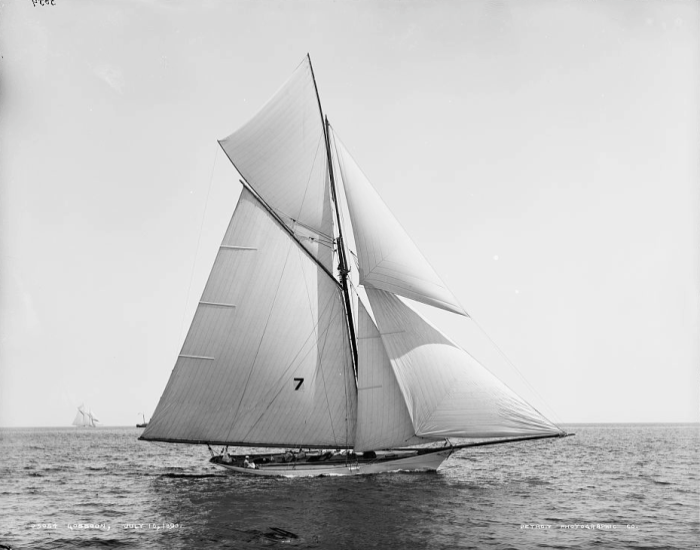
Sailing introduces your child to art, beauty, nature, and teamwork. You will find them wanting to help furl the sails. You will find them steer the boat with pride. You will watch with pride as they point out when the sails are luffing. There is something very freeing about sailing. You glide along the water, it is almost like flying. It is soft, quiet and peaceful.
Sails on larger vessels are typically left in place, while it is easier to remove sails from the rigs of smaller vessels. Furling a sail simply means to put the thing away after use. Sails are commonly folded and covered, or rolled into a tubular shape by an onboard mechanism.
In sailing, luffing refers to when a sailing vessel is steered far enough toward the direction of the wind ("windward"), or the sheet controlling a sail is eased so far past optimal trim, that airflow over the surfaces of the sail is disrupted and the sail begins to "flap" or "luff" (the luff of the sail is usually where this first becomes evident). This is not always done in error; for example, the sails will luff when the bow of the boat passes through the direction of the wind as the sailboat is tacked.
A sailboat can also be "luffed" slightly without completely de-powering the sails. Often this occurs on the point of sail known as close hauled, this is sometimes referred to as pinching or "feathering" and is sometimes done deliberately in order to make a more direct course toward an upwind destination (see: "beating to windward"), or to "de-power" a sail on a windy day to maintain control of the sailboat. "Luffing" can also be used to slow or stop a sailboat in a controlled manner. To offset luffing at the top of the sail one should move the sail "lead" forward until the point where the "telltales" break evenly.
In comparison, a household with young children is a noisy and clamorous affair. There is always noise and contention. Young children cry and demand. Sugar and other children exacerbate this situation. However, on the ocean (or in a bay), there is none of this. The children will calm down and start to fit into the routine and the rhythm of the boat. Oh, they will get the “sea legs” soon enough.
“The sea hates a coward.” - Eugene O’Neill
If the parent is so inclined, they can help the child with sailing lessons. In each and every case, the parent should make sure that the child knows the basics of swimming (not included in this list, as it is a MAJOR fundamental requirement for all of my children. They learn how to swim early on.). When in the boat, all children wear life preservers, and all of them must know how to “turn a boat around” to rescue a person during a “man overboard” drill. Try it. Your children would love it!
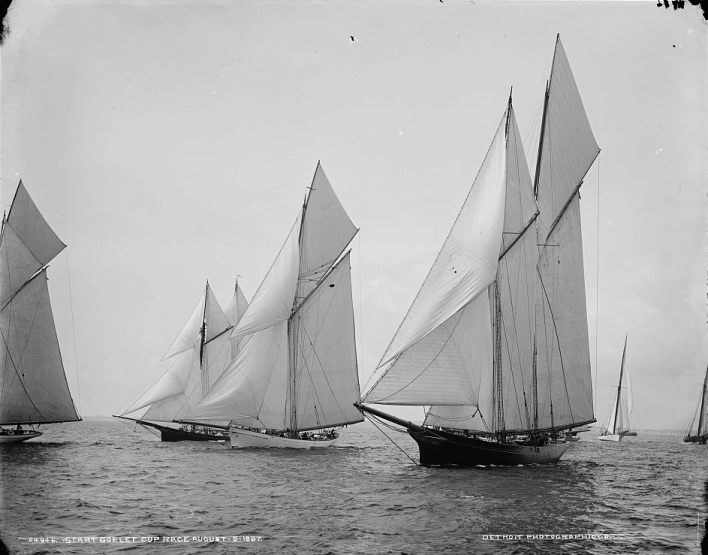
Others have written about the beauty of sailing. Consider Christopher Cross for example.
For those readers who have never sailed, I would seriously suggest that you take the opportunity to do so. I am not talking about a little puddle boat, but a large sailing vessel with a decent beam and some real size. It is achievable, as many boat owners offer rides in their sailboats for a very reasonable price as a way to make extra money.
For those of you who have, let me suggest that you invest in a simple boat rather than a new cellphone. In my household, tools and clothing that helps the children learn hold far greater value than what everyone else is doing. You, dear reader, should realize that your High School days are over. Those who have succeeded in life, we NOT the ones who were average and “went with the pack”. Do not allow that temptation to mold your child’s thought process.
Here’s some great links for the convinced and interested reader;
- Little sailboats for children.
- How to get your children started in sailing.
- A child’s story about sailing.
- How to keep your children safe when sailing.
- Your first stop if you want to introduce your child to sailing. Go HERE. Outstanding!
- Photos of children sailing.
- A fantastic FREE magazine all about how to get your child into sailing. Large PDF, but worth it.
- Maybe you want a more structured approach. Go OUTWARD BOUND.
- Sailing books for beginners.
- Boats designed for children and youth to use to sail with.
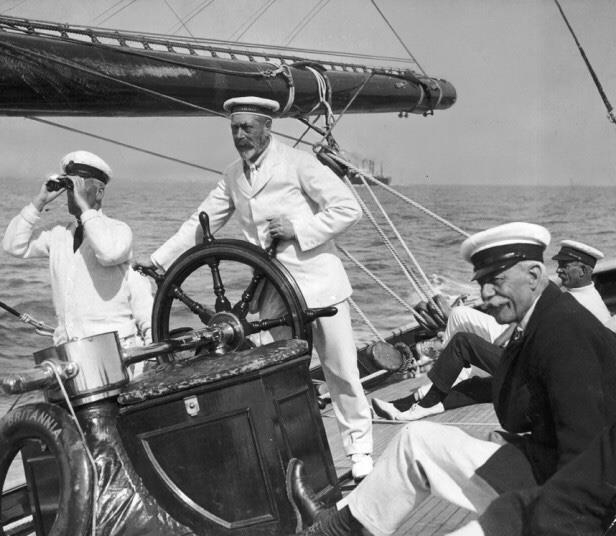
“There is a special moment in sailing after clearing a harbor and setting the sails, when you turn off the engine and feel the boat lean into the wind and silently pick up speed. In that single quiet moment, all the joys of sailing come to me in a rush: freedom from the work-a-day life ashore, the thrill of travel, the challenge of pitting myself against the forces of the sea.” - Stephan G. Regulinski
Ride Your Bike Off a Ramp
This was something that I did when I was a kid, and something that horrified my mother. Never the less, I don’t know of anyone who ever died from it.
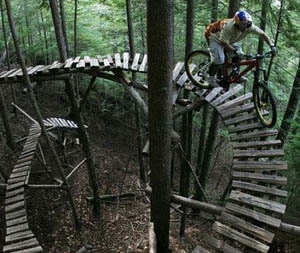
It’s a thrill and a brush with danger that is still possible in this too-sterile world. Building and riding off ramps will teach your kids some basic physics and even some construction skills. Let them be kids, for goodness sakes. Don’t end up like that joke-of-a-President Obama who rides a bicycle with helmet and protective padding. Good God!
But…
But… Let’s not leave it at that. Riding a bike through the woods can be a great adventure. I certainly enjoyed it as a kid growing up. Today, in China, bike ride-share has taken the nation by storm, but these bikes are all for urban transport from one location to another.
That is not what I am writing about.
Instead I suggest aggressive bike adventures in the woods. If you are an American, there is no reason why you can’t explore the old trails and country railroad access trails. There is no reason why you can’t ride the deserted industrial sites and explore the “off the beaten” path adventures just waiting for there for you. There is no reason why you can’t ride along long disused railroad tracks, ride up and down abandoned urban complexes, or explore old sections of cracked highway.
“beginning in 2011, Swanson Primary School in New Zealand submitted itself to a university experiment and agreed to suspend all playground rules, allowing the kids to run, climb trees, slide down a muddy hill, jump off swings, and play in a “loose-parts pit” that was like a mini adventure playground. The teachers feared chaos, but in fact what they got was less naughtiness and bullying—because the kids were too busy and engaged to want to cause trouble, the principal said.” -The Overprotected Kid
Which brings up another subject…
Explore an Abandoned Building
Ouch! This is a painful admission. Abandoned sites are dangerous. You can get hurt or more. When I was five I walked on a rusty nail protruding from a board in an abandoned house near our place. I had to get some painful shots as a result.
Never the less, I explored many an abandoned building, and went in and out of local railroad tunnels throughout the Western Pennsylvania hills where I lived. I cannot say that I would promote my children doing so, but if I found out about it, I wouldn’t lambast them either. The key is preparation. The children need to know about the dangers before hand, and then with the basic tools and knowledge just let them explore a bit.
When I was in second grade I learned that if you jumped off the second floor of an abandoned building that your feet and legs would hurt. I learned that old pipes had water, but the water was thick and red with rust. I learned that nails were everywhere and if you weren’t careful you could step on one and need to go to the doctor and get an injection. I learned that broken glass is everywhere in an old building and you could get hurt if your touched it.
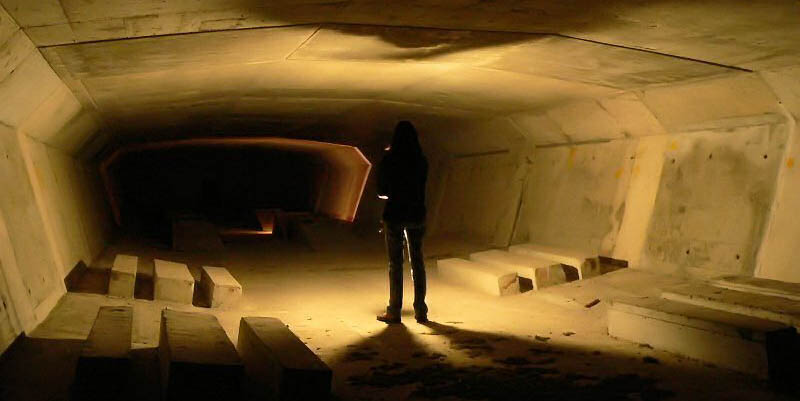
A good parent allows the child to learn.
A good parent will rather have the child experience a bruise or two rather than live a life in fear, or worse yet, walk straight into danger unawares. As a child, I was petrified of spiders, snakes, frogs, and bees. Over the years, through close contact, I have learned not to be fearful of these things. Let your child learn early. Equip them with the knowledge to live and survive in an often-unfriendly world.
Climb a Rope
Climbing is one of the crucial physical skills everyone should develop. In America, from what I gather, climbing a rope is something that is frowned upon. As is climbing stairs higher than four feet. Have you looked at what constitutes a playground these days?
Now, if schools won’t provide the opportunity for a little physical exercise, then parents ought to. I am way too old to climb, but it doesn’t mean that I don’t make the effort to show how it is done.
In the old days (about 100 years ago), every community had a playground. These playgrounds consisted of “monkey bars”, swing sets, seesaws, and other simple outdoor childhood entertainments. Typically, they had sand at the bottom of the metal (and often concrete) structures to mitigate any cuts, scrapes or broken bones. There was sand at the bottom of the monkey bars, sand at the bottom and end of the slides, and sand below the swing sets.
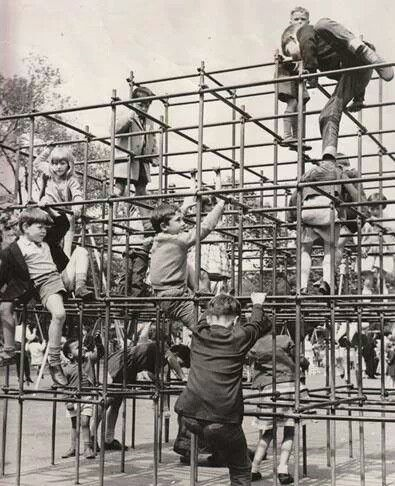
This continued into my parents’ generation and mine as well. However, over time, the playground equipment became more standardized and mass-produced. By the time the 1980’s rolled around, there were small community organizations forming to make playgrounds “safer”, “better” and (perhaps) more “educational”. These “improvements” resulted in making the playgrounds nice and safe and very boring.
Often centering around a “community activist”. This “activist” often had no source of financial income except what manifested as a result of litigation. Litigation was the fruit that justified their activism. Many “well intentioned” changes were just creative ways for an individual or group of individuals to make money without physical labor. Don’t like my opinion? Prove me wrong.
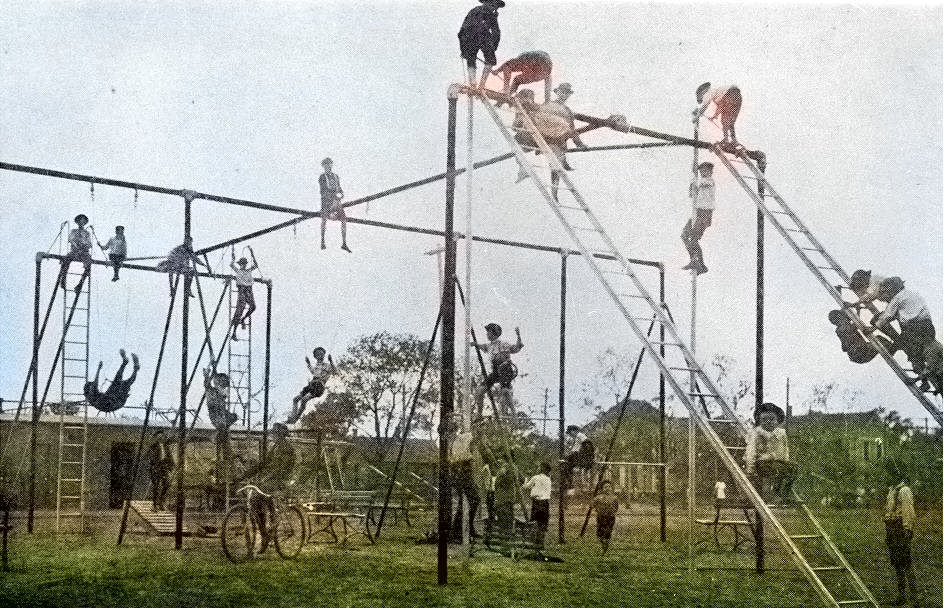
For instance, slides became lower. Instead of two stories high during my parents’ generation, and one story high (8 feet) in my generation, they became four feet high. “Monkey Bars” became smaller and lower to the ground. Even seesaws and swings became smaller, or eliminated all together. These “improvements” were welcomed by all the protective parents in their respective communities, or at least by the most vocal ones.
There was only one problem.
The structures were boring and did not challenge the children. They were instead only suitable for mentally retarded and handicapped children, infants under the age of two, and overweight mothers. My gosh! Children should be challenged while in a safe environment, not coddled until they become an adult.
Bubble wrap was intended for the protection of inanimate objects. Not for human beings. Protective attire is necessary for close combat, hazardous work, and working with tools. It should not be necessary for transportation, play or dining.
My experience, in life, has been that once the father leaves (dies or simply abandons the household); the mother tends to clutch on to the child. She becomes hyper protective. If the child is unable to go out on their own, this terrible behavior (and self-serving behavior) by the mother completely messes up the child. They become “retarded” in normal development.
Those of you readers who have accomplished anything know exactly what I speak of.
I strongly believe that children, like cats and puppies, should be encouraged to climb, fight, sing, dance, and do other tasks that involve a moderate level of risk. It is better to climb in a park near your house than on a mountain side hours from a nearby hospital.
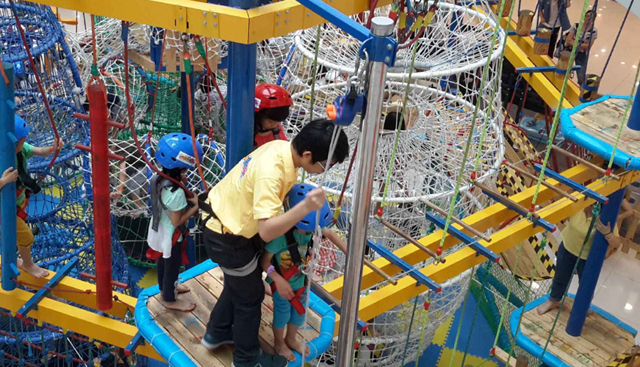
I was reminded of this by an event in a local park here in China. There were some children being taught repelling and climbing skills by a small group of instructors. It turns out that many malls and store complexes in China have these huge climbing complexes of ropes, and netting that children are permitted to go “nuts” over.
They are very popular here, and are well maintained and monitored. They also offer excursions in local parks. I strongly advise all parents to utilize this resource.
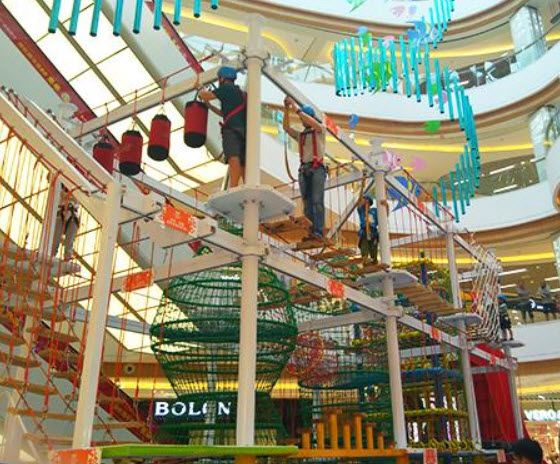
These arrangements are a multi-colored mixtures of beams, ropes, hoops, ladders, bars, and free hanging containers. The maze towers upward. Often they are five or six stories high. There is one in GuoMao in the LouHu section of ShenZhen that towers seven stories high. There is one in the JiDa section of ZhuHai that goes all the way up to the fifth floor.
You can watch the children high up, five stories above, walking a balance beam. The only thing saving them is a tethered harness so if they lose their footing, they will not fall (and die). I have seen many a petrified first and second grader carefully exploring this maze of rope and bars. Too bad American parents are too fearful to expose their children to adventure.
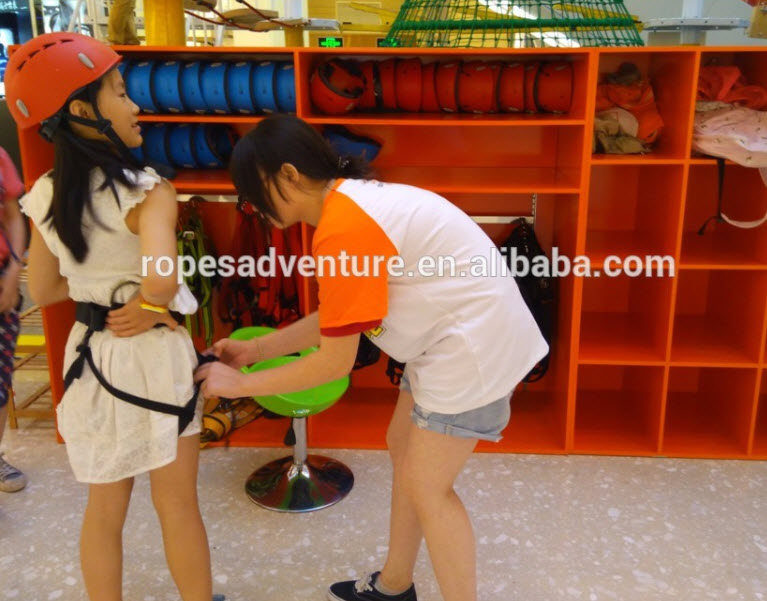
The Chinese provide their children with a fine place to climb and explore. Sure there is an element of risk, but there are trained instructors and safety harnesses and helmets provided. Compare that to a modern American playgound. There isn’t any risk. There isn’t any opportunity to explore and have adventure. It is typically in one or two colors, it consists of a few fences and railings, and some stairs to climb up. It is also very safe. It is the opposite of what is available in China.
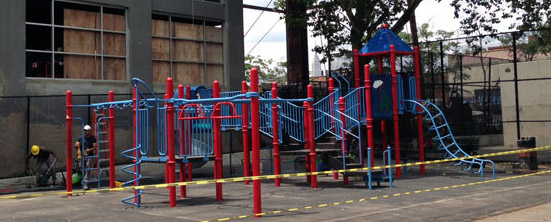
American playgrounds are designed for idiots. They are ridiculously safe. Soon, someone will complain (I am sure a SJW looking for a financial award) about rain, and demanding that they be shaded and protected from the weather. Maybe the metal components are too hard, and so they will now need to be completely padded, and let’s add a paid child monitor to the mix (paid for with your tax dollars).
Notice that there are no swings, seesaws, slides, monkey bars or merry go-rounds. Too dangerous the SWJ’s (busybodies) state.
Use a Pocket Knife
I never gave any consideration to the importance of a pocket knife. I was just something that I thought all boys had and used. That is, until I saw a Chinese boy looking at them in the (underground Zhuhai) mall…
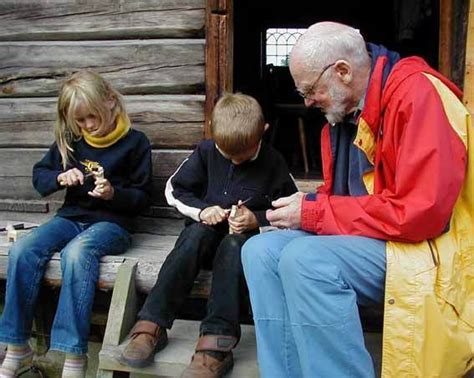
Shortly afterwards, I read an article titled “The Complete guide to Pocket Knives”. That served as my inspiration, and cracked up a wallet just a little bit…
There’s something manly about your first pocket knife. It doesn’t have to have 100 blades and a corkscrew, but it should have at least two different blades and maybe a file.
My (second) pocket knife was a red Swiss Army knife with maybe five different blade combinations including a can opener, and rasp. It replaced my boy scout knife that I had, as well as just about every other boy in my school, one Christmas. It was a gift from my father.
“One day last year, a citizen on a prairie path in the Chicago suburb of Elmhurst came upon a teen boy chopping wood. Not a body. Just some already-fallen branches. Nonetheless, the onlooker called the cops. Officers interrogated the boy, who said he was trying to build a fort for himself and his friends. A local news site reports the police then “took the tools for safekeeping to be returned to the boy’s parents.” -The Fragile Generation
What? A boy cannot cut up wood? What planet ware we on? And the Chicago police promptly relied him of the tools and escorted him to the safety of his parents? This is friggin’ unbelievable!
“Elsewhere in America, preschoolers at the Learning Collaborative in Charlotte, North Carolina, were thrilled to receive a set of gently used playground equipment. But the kids soon found out they would not be allowed to use it, because it was resting on grass, not wood chips. “It’s a safety issue,” explained a day care spokeswoman. Playing on grass is against local regulations.” -The Fragile Generation
Playing on the grass is against safety regulations!
Let me repeat as an underline; “Playing on the grass is against safety regulations.”
This is America.
“And then there was the query that ran in Parents magazine a few years back: “Your child’s old enough to stay home briefly, and often does. But is it okay to leave her and her playmate home while you dash to the dry cleaner?” Absolutely not, the magazine averred: “Take the kids with you, or save your errand for another time.” After all, “you want to make sure that no one’s feelings get too hurt if there’s a squabble.” -The Fragile Generation
By all means, protect the child’s feelings…(!)
“The principle here is simple: This generation of kids must be protected like none other. They can’t use tools, they can’t play on grass, and they certainly can’t be expected to work through a spat with a friend. And this, it could be argued, is why we have “safe spaces” on college campuses and millennial's missing adult milestones today. We told a generation of kids that they can never be too safe—and they believed us.“ -The Fragile Generation
Ah, it’s a generation of wusses. But, my children will not be part of it. They are taught how to [1] measure the unknown, [2] put aside fears, and [3] utilize tools to accomplish their goals.
Pocket knives are great tools, and all children, boys and girls should learn to use one. Nothing is better than using it to cut up an apple, or pear. Use it to cut away branches to make a sling-shot, or make a fine walking stick (a teenage necessity).
If you give your child a knife with different blades, please remember to show them how each blade is used. Do not simply expect them to understand it by osmosis. (Like my father did.) Show them the screw driver, and the can-opener blade, and let them open a can or two of pork and beans and let it cook on a campfire once opened. The corkscrew won’t come in handy until they are in college.. heh, heh.

This being stated, I do not advise knives being brought into American schools. The days of cub scouts having a pocket knife and bringing it into class is long, long over. Incidentally, a cub-scout pocket knife would be an ideal knife for your child int his regard. I had one when I was a boy. I had it for a while until it was replaced by a red (maybe fake) Swiss army knife.
“As a kid in the 1970’s, almost every boy carried a pocket knife. It wasn’t a weapon or for showing off, unless it was new. Sometimes you had to actually cut something and scissors just wouldn’t do. When you were bored, you’d whittle a stick or a piece of wood with it. I have a simple walking stick carved by my great grandfather, and I recall the mystique of watching and helping as he sharpened his knife. In my keepsake box, I have a pocket knife of my father and grandfather. Interestingly, along with a Confederate $5 bank note, Lincoln had one in his pocket the night he was shot.” -CR Smyth
You do not need to get the biggest, or the most elaborate knife. A simple knife is the best thing. make sure that it is rugged. Children are difficult on things. Make sure that it has two to three blades that the child can master. Make sure that it fits well in his hand, and that it is beautiful enough so that he will want to carry it around with him.
Explore a Construction Site
China is filled with construction sites. While I don’t advocate kids climbing about on the 60th floor of some new skyscraper, many build sites offer great opportunity for exploration and adventure. That is fun. Moreover, dear reader, fun and play is HOW children learn.
While I was growing up, the subdivision I lived in was still under construction, so there were always plenty of partially-built houses to explore. After the construction workers left for the day, my boyhood pals and I would cruise down the street on our bikes to check out their work and poke around the skeletal structures rising from the muddy lots. The ones that were the most fun to explore were the two-story houses. You’d have to climb up the railing-less, unfinished stairs and when you got to the top, you were able to walk to the edge of the second story’s framing and throw stuff down on your buds. What great fun!
One of the first things I learned, I was in second grade at the time, was that if you jumped from the second floor to the ground, it hurt! Ouch!
In America today, kids are not permitted “free range” play. They are constantly under observation and supervision. They are coddled and are not given the opportunity to learn some “hard knocks”. I consider this a very troubling situation, and I do not allow my children to be coddled in this way. It wasn’t always this way. Children used to be permitted to play.
Here is a great write up on why public playgrounds became so sterile;
“In 1978, a toddler named Frank Nelson made his way to the top of a 12-foot slide in Hamlin Park in Chicago, with his mother, Debra, a few steps behind him. The structure, installed three years earlier, was known as a “tornado slide” because it twisted on the way down, but the boy never made it that far. He fell through the gap between the handrail and the steps and landed on his head on the asphalt. A year later, his parents sued the Chicago Park District and the two companies that had manufactured and installed the slide. Frank had fractured his skull in the fall and suffered permanent brain damage. He was paralyzed on his left side and had speech and vision problems. His attorneys noted that he was forced to wear a helmet all the time to protect his fragile skull. The Nelsons’ was one of a number of lawsuits of that era that fueled a backlash against potentially dangerous playground equipment. Theodora Briggs Sweeney, a consumer advocate and safety consultant from John Carroll University, near Cleveland, testified at dozens of trials and became a public crusader for playground reform. “The name of the playground game will continue to be Russian roulette, with the child as unsuspecting victim,” Sweeney wrote in a 1979 paper published in Pediatrics. She was concerned about many things—the heights of slides, the space between railings, the danger of loose S-shaped hooks holding parts together—but what she worried about most was asphalt and dirt. In her paper, Sweeney declared that lab simulations showed children could die from a fall of as little as a foot if their head hit asphalt, or three feet if their head hit dirt. A federal-government report published around that time found that tens of thousands of children were turning up in the emergency room each year because of playground accidents. As a result, the U.S. Consumer Product Safety Commission in 1981 published the first “Handbook for Public Playground Safety,” a short set of general guidelines—the word guidelines was in bold, to distinguish the contents from requirements—that should govern the equipment. For example, no component of any equipment should form angles or openings that could trap any part of a child’s body, especially the head. To turn up the pressure, Sweeney and a fellow consultant on playground safety, Joe Frost, began cataloguing the horrors that befell children at playgrounds. Between them, they had testified in almost 200 cases and could detail gruesome specifics—several kids who had gotten their heads trapped or crushed by merry-go-rounds; one who was hanged by a jump rope attached to a deck railing; one who was killed by a motorcycle that crashed into an unfenced playground; one who fell while playing football on rocky ground. In a paper they wrote together, Sweeney and Frost called for “immediate inspection” of all equipment that had been installed before 1981, and the removal of anything faulty. They also called for playgrounds nationwide to incorporate rubber flooring in crucial areas. In January 1985, the Chicago Park District settled the suit with the Nelsons. Frank Nelson was guaranteed a minimum of $9.5 million. Maurice Thominet, the chief engineer for the Park District, told the Chicago Tribune that the city would have to “take a cold, hard look at all of our equipment” and likely remove all the tornado slides and some other structures. At the time, a reader wrote to the paper: “Do accidents happen anymore? … Can a mother take the risk of taking her young child up to the top of a tornado slide, with every good intention, and have an accident? Who is responsible for a child in a park, the park district or the parent? … Swings hit 1-year-old children in the head, I’m sure with dire consequences in some instances. Do we eliminate swings?” But these proved to be musings from a dying age. Around the time the Nelson settlement became public, park departments all over the country began removing equipment newly considered dangerous, partly because they could not afford to be sued, especially now that a government handbook could be used by litigants as proof of standards that parks were failing to meet. In anticipation of lawsuits, insurance premiums skyrocketed. As the Tribune reader had intuited, the cultural understanding of acceptable risk began to shift, such that any known risk became nearly synonymous with hazard. Over the years, the official consumer-product handbook has gone through several revisions; it is now supplemented by a set of technical guidelines for manufacturers. More and more, the standards are set by engineers and technical experts and lawyers, with little meaningful input from “people who know anything about children’s play,” says William Weisz, a design consultant who has sat on several committees overseeing changes to the guidelines. The handbook includes specific prescriptions for the exact heights, slopes, and other angles of nearly every piece of equipment. Rubber flooring or wood chips are virtually required; grass and dirt are “not considered protective surfacing because wear and environmental factors can reduce their shock absorbing effectiveness.” “Reasonable risks are essential for children’s healthy development,” says Joe Frost, an influential safety crusader. It is no longer easy to find a playground that has an element of surprise, no matter how far you travel. Kids can find the same slides at the same heights and angles as the ones in their own neighborhood, with many of the same accessories. I live in Washington, D.C., near a section of Rock Creek Park, and during my first year in the neighborhood, a remote corner of the park dead-ended into what our neighbors called the forgotten playground. The slide had wooden steps, and was at such a steep angle that kids had to practice controlling their speed so they wouldn’t land too hard on the dirt. More glorious, a freestanding tree house perched about 12 feet off the ground, where the neighborhood kids would gather and sort themselves into the pack hierarchies I remember from my childhood—little kids on the ground “cooking” while the bigger kids dominated the high shelter. But in 2003, nearly a year after I moved in, the park service tore down the tree house and replaced all the old equipment with a prefab playground set on rubber flooring. Now the playground can hold only a toddler’s attention, and not for very long. The kids seem to spend most of their time in the sandbox; maybe they like it because the neighbors have turned it into a mini adventure playground, dropping off an odd mixing spoon or colander or broken-down toy car.” -The Overprotected Kid
Well-wishing “do gooders” “busy-bodies” with a profit angle and political influence ruined the educational benefits of pay for nearly two generations of American children.
There is not too much that I can do about it, except for what I do with my children. And, my dear reader, kindly note that they are permitted to play in a fundamentally non-sterile environment.
Shoot a Slingshot
In a time not too long ago, the archetypal boy had a handmade slingshot dangling from the back of his pocket. Today, most boys have never touched one. Which is a shame because slingshots can provide hours of fun and they’re a great way to introduce firearm safety to your young ones (e.g., only point at what you plan on hitting). Yes, you could just buy your kid a fancy manufactured slingshot on Amazon, but how about exposing them to even more positive danger by letting them make their own? They’ll learn how to handle a saw safely and get to practice some knife wielding skills to boot.
However, depending where you live, possession of a slingshot might be problematic.
Some busybody might call the ATF and insist that your child’s slingshot meets the all the regulations for a projectile weapon, such as barrel length, whether or not it has a “bump stock”, magazine size, and whether or not it appear paramilitary.
If you live in in an area where they shut down lemonade stands run by five year olds, then you might want to reconsider the activities that you permit your child to participate in. If you live in the USA, I would suggest moving to a place where there are not such idiotic regulations, like Communist China or Thailand. Here you can do anything you want within reason.
Read about this sad state of affairs;
- The Inexplicable War on Lemonade Stands
- Cops Shut Down Lemonade Stand, Said Little Girls Need a Permit
- Texas cops shut down girls’ ‘illegal’ lemonade stand
- Lemonade Stand Busted By Cops For Being ‘Illegal’?
- Texas Police Officers Shut Down Girls’ Lemonade Stand Because They Didn’t Have A Permit
- Texas police shut down girls’ lemonade stand, demand permit
- “I’ve Done A Bad Thing” 5yo Girl Bursts into Tears As Cops Fine Her for Lemonade Stand
- Georgia Police Close Girls’ Lemonade Stand
- The Yellow Menace
- Georgia Girl Scout Troop’s Cookie Booth Shut Down By Police (VIDEO)
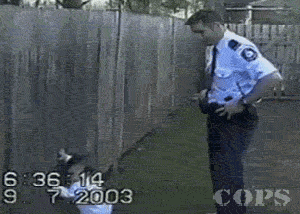
This is Part 1 of a Two Part Post
This is part one of a two part post. You can go to the other post HERE. This post is rather long. I have exceeded the “industry norm” (Google SEO advisement) by a significant word count. As is my prerogative. You can visit the rest of this post HERE.
Conclusions, “Take Aways” and FAQ can be found on the second post.
Posts Regarding Life and Contentment
Here are some other similar posts on this venue. If you enjoyed this post, you might like these posts as well. These posts tend to discuss growing up in America. Often, I like to compare my life in America with the society within communist China. As there are some really stark differences between the two.








More Posts about Life
I have broken apart some other posts. They can best be classified about ones actions as they contribute to happiness and life. They are a little different, in subtle ways.






Stories that Inspired Me
Here are reprints in full text of stories that inspired me, but that are nearly impossible to find in China. I place them here as sort of a personal library that I can use for inspiration. The reader is welcome to come and enjoy a read or two as well.
Articles & Links
- You can start reading the articles by going HERE.
- You can visit the Index Page HERE to explore by article subject.
- You can also ask the author some questions. You can go HERE to find out how to go about this.
- You can find out more about the author HERE.
- If you have concerns or complaints, you can go HERE.
- If you want to make a donation, you can go HERE.
Notes
- Composed 23AUG18.
- SEO review 23AUG18.
- Published 23AUG18.

